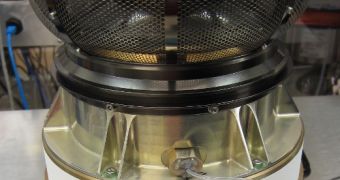When the NASA Mars Atmosphere and Volatile EvolutioN (MAVEN) spacecraft launches next week, on November 18, it will carry with it an instrument capable of analyzing solar electrons, and their influence on the atmosphere of the Red Planet. ;
This tool may finally explain how the Red Planet lost its atmosphere while facing relentless influences from the Sun.
Dubbed the Solar Wind Electron Analyzer (SWEA), the instrument will play a critical role in determining why Mars has become a desolate, cold desert over the eons, when it started out pretty much like our own planet did. Scientists say that this world was hospitable to life once.
However, in time, its molten core stopped spinning, and its protective magnetic fields disappeared. This allowed charged solar particles to interact with the planet's atmosphere, stripping it bare, until only a shell of its former self remained. MAVEN's mission will be to determine how this process occurred, and why.
Once the spacecraft enters orbit around Mars, in September 2014, SWEA will start investigating solar electrons in two areas around Mars. The first is the region occupied by solar winds as they fly past the planet, and the second is a layer high in the Martian atmosphere, called the ionosphere.
The instrument was produced by scientists with the University of California in Berkeley (UCB) Space Sciences Laboratory (SSL) and the Institut de Recherche en Astrophysique et Planétologie (IRAP), in France. SSL expert David L. Mitchell is the lead investigator for SWEA.
“The instrument will tell whether the spacecraft is measuring planetary plasma or solar wind plasma. It determines the environment, which is important for setting the stage for interpreting other measurements,” the scientist says.
“We're trying to understand the boundary layer between the solar wind and the planet's ionosphere because this is a key region where planetary material is being lost. We want to understand the loss processes and how the solar wind is stripping away the atmosphere,” he adds.
MAVEN is scheduled to launch from the Cape Canaveral Air Force Station, in Florida, on November 18, aboard an Atlas V heavy-lift rocket. It is scheduled to achieve orbital insertion around the Red Planet on September 22, 2014, just one week after the arrival of the Indian Space Research Organization's (ISRO) Mars Orbiter Mission.

 14 DAY TRIAL //
14 DAY TRIAL //